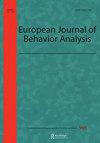Teaching visual conditional discriminations using errorless learning: The role of prompts requiring simple and conditional discriminative control
引用次数: 8
Abstract
ABSTRACT Errorless learning procedures were first developed in Basic Research Laboratories with nonhuman subjects to teach simple (i.e., nonconditional) discriminations (SD). Today, errorless procedures are widely used for teaching both simple and conditional discriminations (CD), often to developmentally limited learners. The present article puts forward the idea that the stimulus control engendered by prompts in errorless learning procedures may also be classified as requiring simple versus conditional discriminative control. The present paper presents data comparing two errorless prompting procedures to teach visual CDs to six typically developing children and three children diagnosed with autism spectrum disorder (ASD). A matching-to-sample procedure with unfamiliar forms as visual stimuli was used. A comparison of two different prompts was conducted: prompts requiring SD control and prompts requiring conditional discriminative control. Results indicated that eight of nine participants acquired CDs in fewer trials when the prompts required conditional control; one child with ASD required fewer trials when prompts required simple discriminative control. Results suggest an advantage for teaching CDs using prompts requiring conditional discriminative control.使用无差错学习教授视觉条件辨别:提示要求简单和条件判别控制的作用
基础研究实验室首次开发了无差错学习程序,用于教授非人类受试者简单(即非条件)辨别(SD)。今天,无差错程序被广泛用于简单判别和条件判别(CD)的教学,通常是针对发展有限的学习者。本文提出在无差错学习过程中提示所产生的刺激控制也可分为需要简单判别控制和需要条件判别控制。本文的数据比较了两种无差错的提示程序来教6个正常发育的儿童和3个被诊断为自闭症谱系障碍(ASD)的儿童。使用不熟悉的表格作为视觉刺激的匹配样本程序。比较两种不同提示:SD控制提示和条件判别控制提示。结果表明,当提示需要条件控制时,9名参与者中有8名在较少的试验中获得cd;当提示需要简单的判别控制时,一个患有ASD的孩子需要较少的试验。结果表明,使用要求条件判别控制的提示教学cd具有优势。
本文章由计算机程序翻译,如有差异,请以英文原文为准。
求助全文
约1分钟内获得全文
求助全文

 求助内容:
求助内容: 应助结果提醒方式:
应助结果提醒方式:


